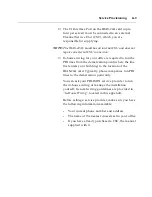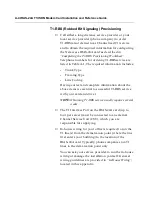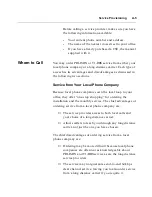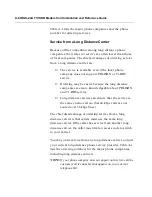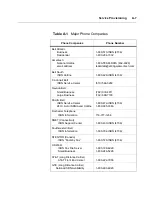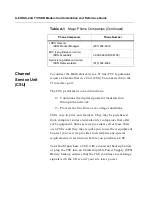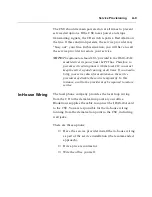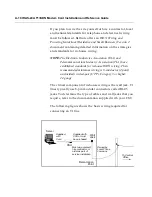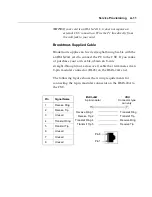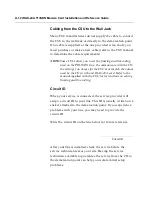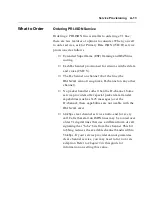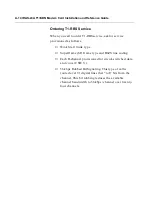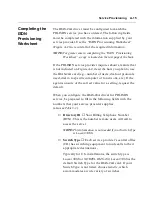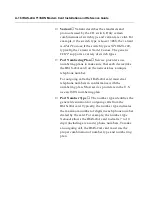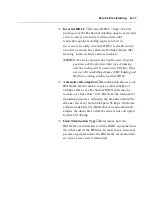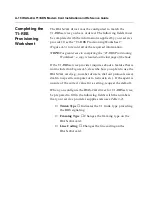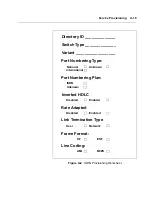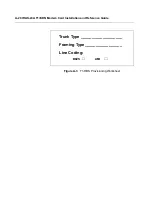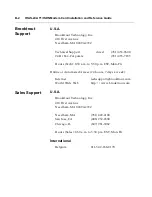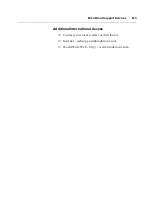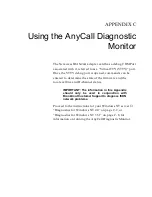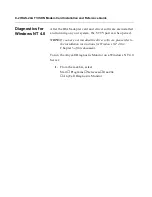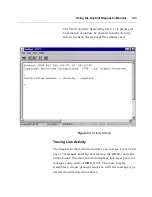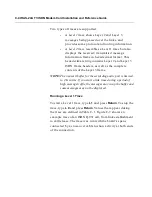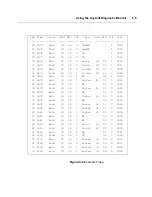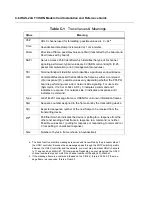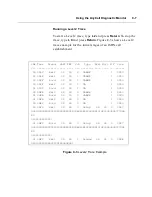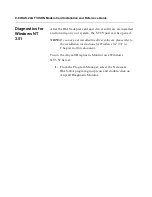
Service Provisioning
A-17
❐
Inverted HDLC
Inverted HDLC “flips” the bits
passing over the D-channel (turning ones to zeros and
zeros to ones) to comply with the network’s
restriction against sending eight zero bits in
succession. Usually, inverted HDLC is enabled only
on older network lines that use D4 Superframe (SF)
framing, so the default value is disabled.
NOTE:
If the service provider has trouble answering this
question, ask the provider what type of framing
and line coding will be used on the PRI line. If the
answer is Extended Superframe (ESF) framing and
B8ZS line coding, disable inverted HDLC.
❐
Automatic rate adaption
Rate adaption allows your
IRAS-24A card to make/receive either 64 kbps or
56 kbps calls over a B-channel. ISDN calls may be
routed over lines that “rob” bits from the channel for
signaling purposes, reducing the amount of data the
channel can carry from 64 kbps to 56 kbps. With rate
adaption enabled, the IRAS-24A card automatically
adjusts the data rate so that the data is not corrupted
by this bit robbing.
❐
Link Termination Type
Determines how the
IRAS-24A card interacts with the ISDN equipment on
the other end of the PRI line. In most cases, customer
premise equipment like the IRAS-24A card should be
set up as a user side termination.
Summary of Contents for IRAS-24A w/ T1-RBS
Page 28: ...2 8 IRAS 24A T1 ISDN Modem Card Installation and Reference Guide...
Page 150: ...B 4 IRAS 24A T1 ISDN Modem Card Installation and Reference Guide...
Page 164: ...C 14 IRAS 24A T1 ISDN Modem Card Installation and Reference Guide...
Page 170: ...D 6 IRAS 24A T1 ISDN Modem Card Installation and Reference Guide...
Page 176: ...E 6 IRAS 24A T1 ISDN Modem Card Installation and Reference Guide...
Page 186: ...Index 8 IRAS 24A T1 ISDN Modem Card Installation and Reference Guide...

